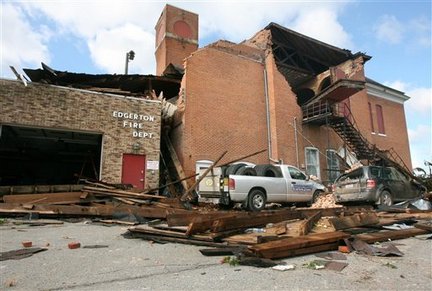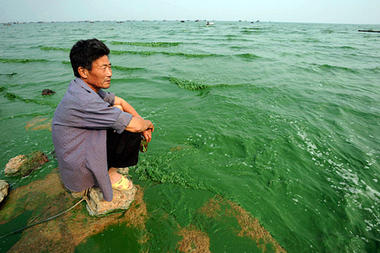
© Madalyn Ruggiero, The Associated PressThe severe weather system that spawned the Connecticut winds also damaged the town hall and fire station in Edgerton, Ohio, photographed Thursday.
A suspected tornado tore through Connecticut's largest city Thursday --
a rare occurrence in the state -- toppling trees and power lines and collapsing a building in Bridgeport as a powerful line of storms swept across parts of the Northeast. Remarkably, no serious injuries were reported.
Hundreds of bricks shook loose from buildings, trees split in half and crushed cars, and a billboard hung precariously several stories up over Main Street. Rescuers searched what was left of a collapsed building before determining no one was inside.
The office of Bridgeport Mayor Bill Finch declared a state of emergency after the fast-moving system of wind and rain.
Jacqueline Arroyo, 44, said she saw a black cloud and ran inside to her third-floor apartment, where the window exploded. Trees were blown so ferociously they appeared to be coming out of the ground, and people were screaming, she said.
"All the wind started coming inside the house. I heard 'boom, boom!'" she said. "It was so fast but terrifying."


